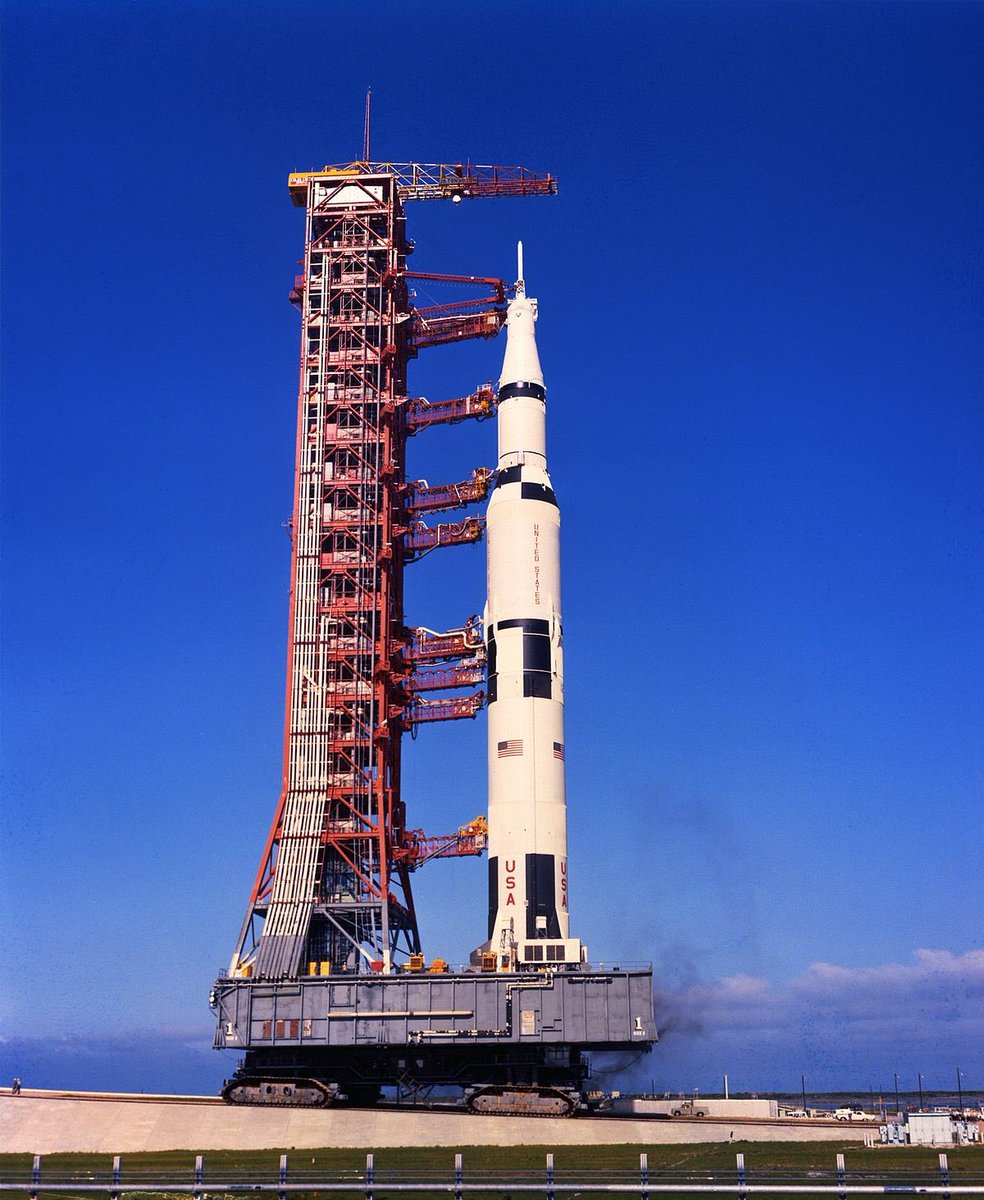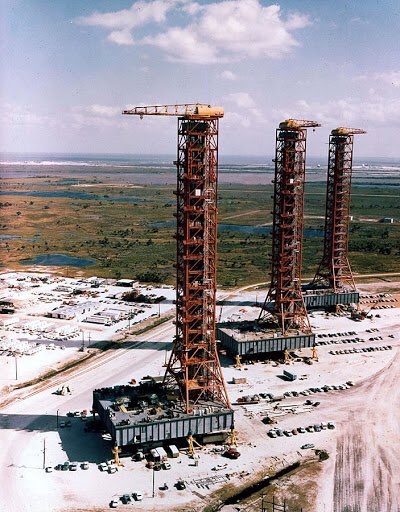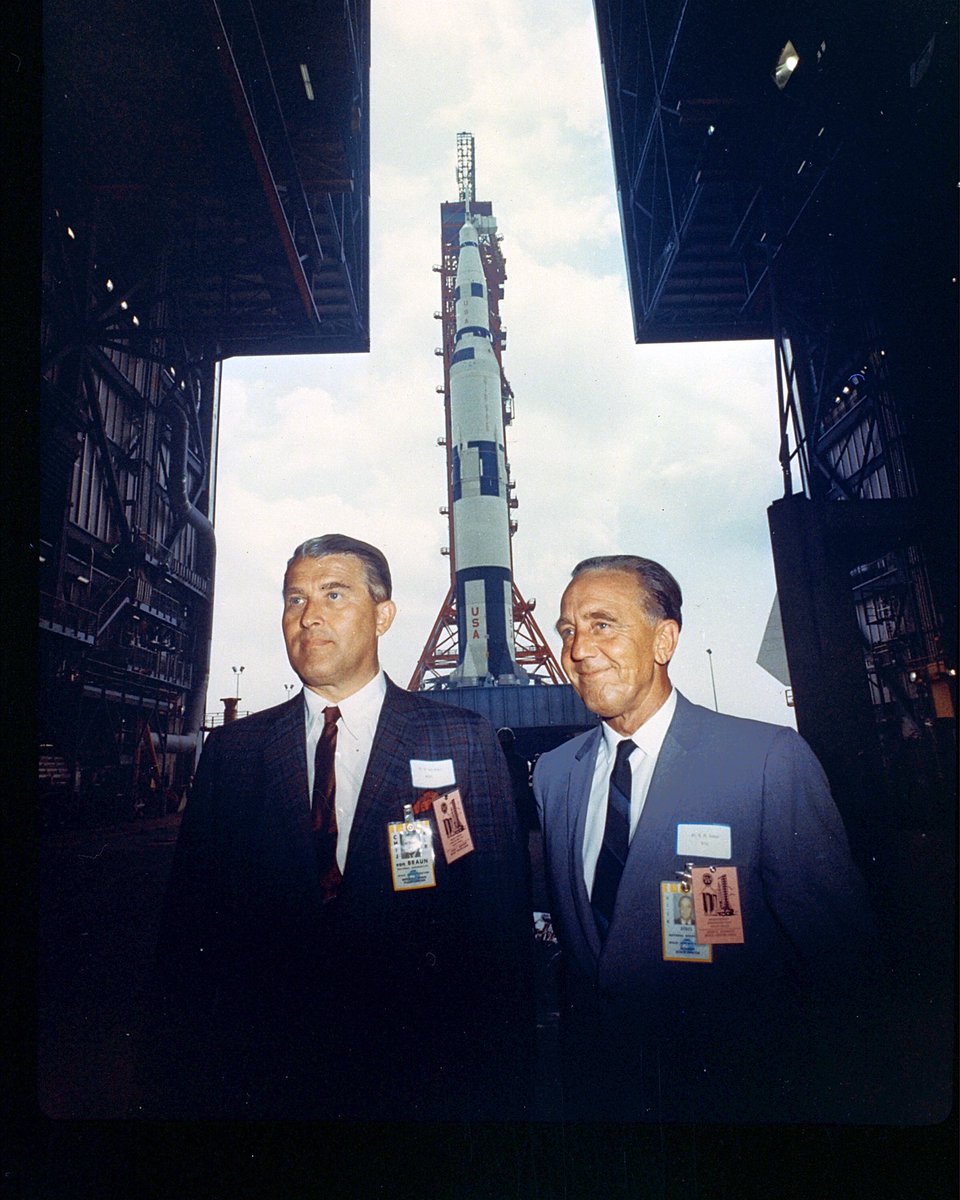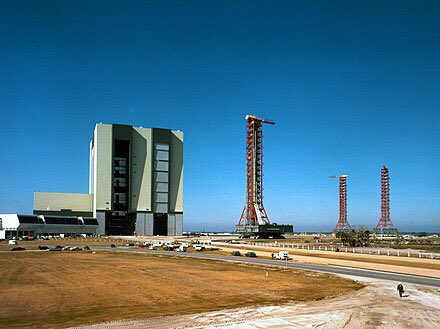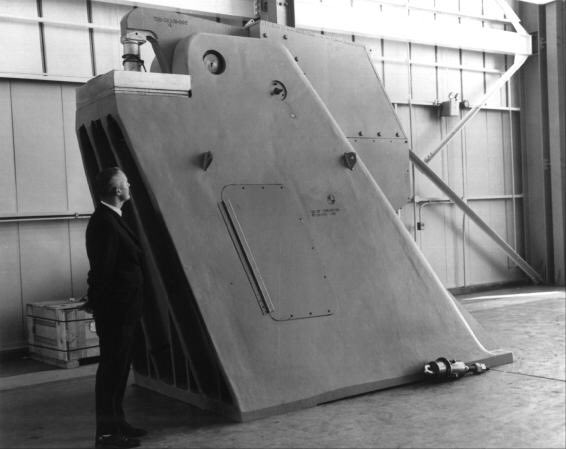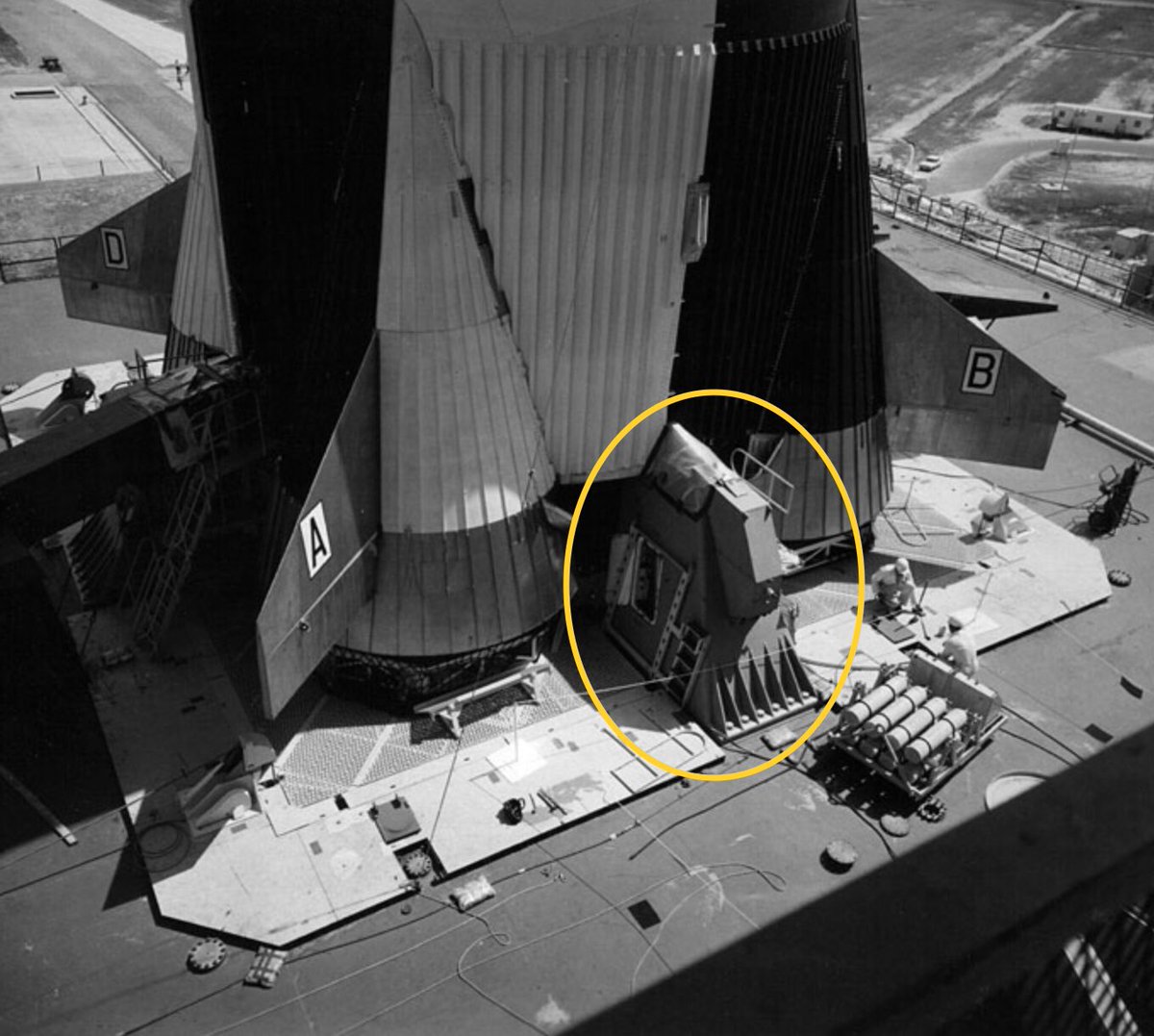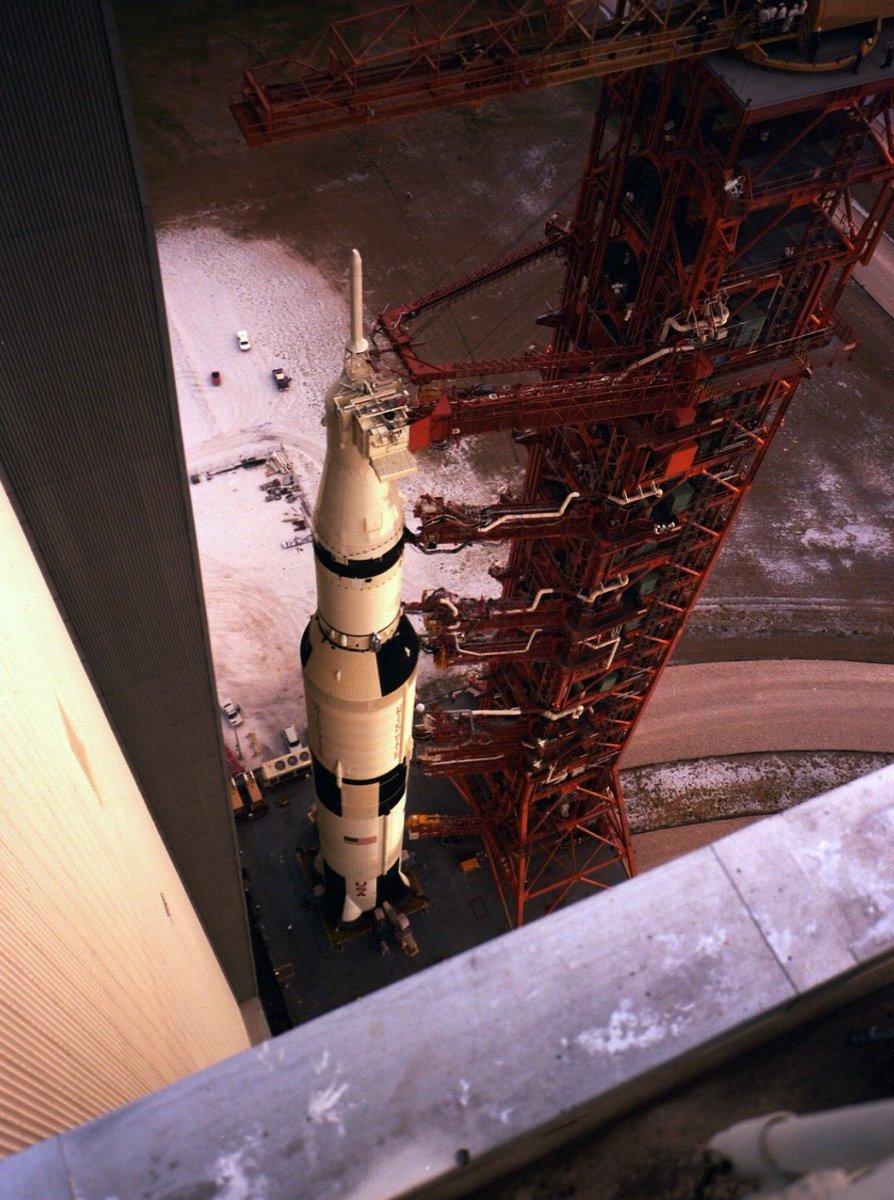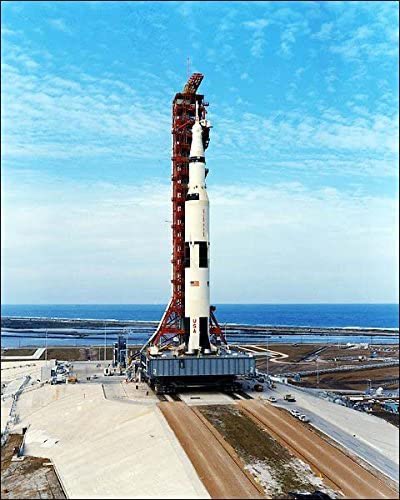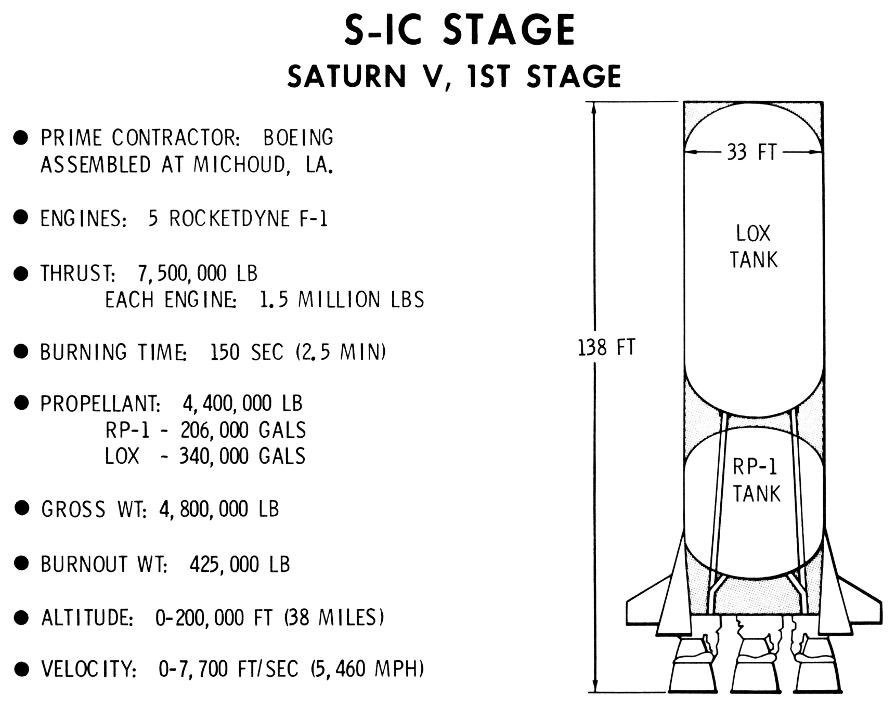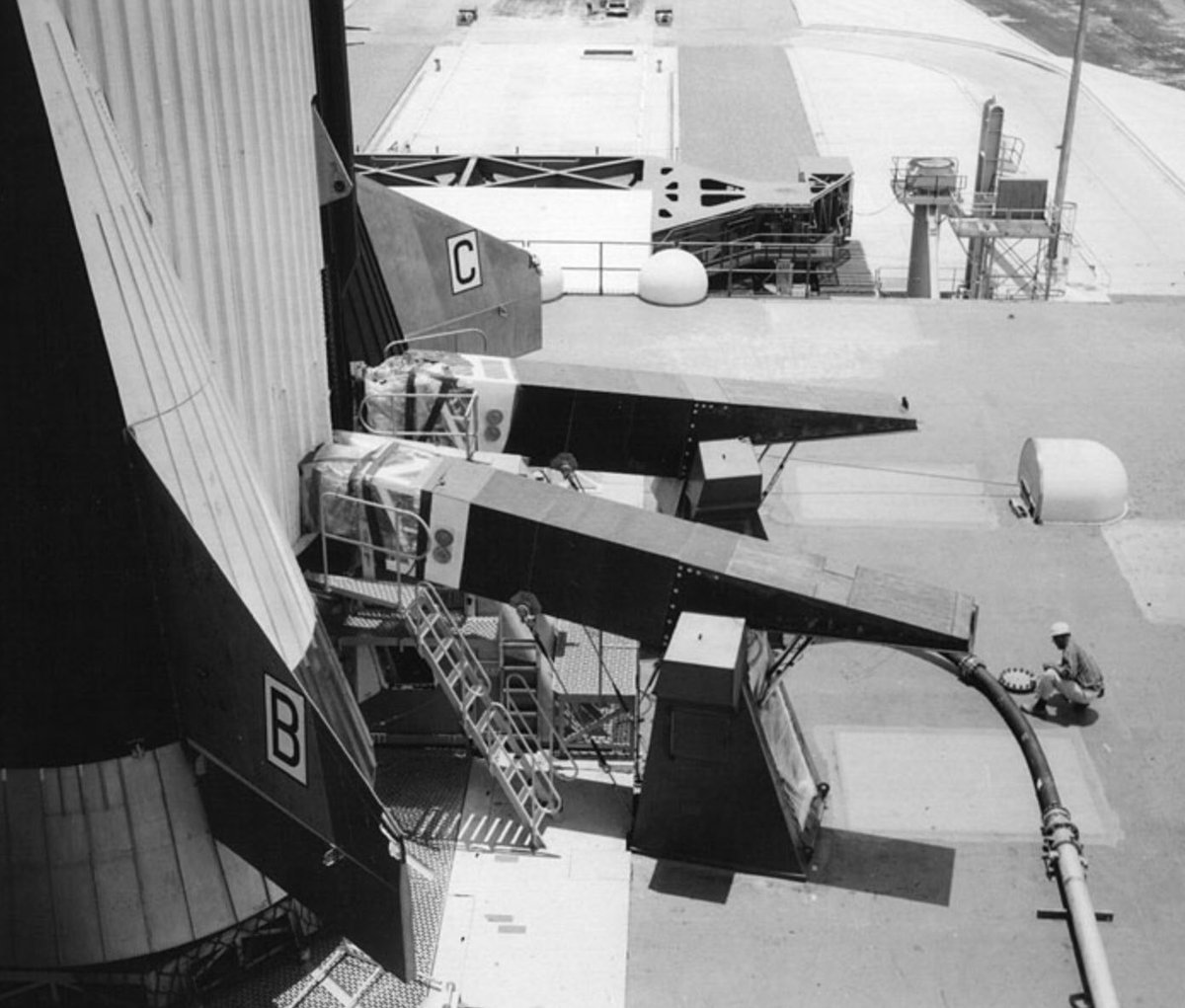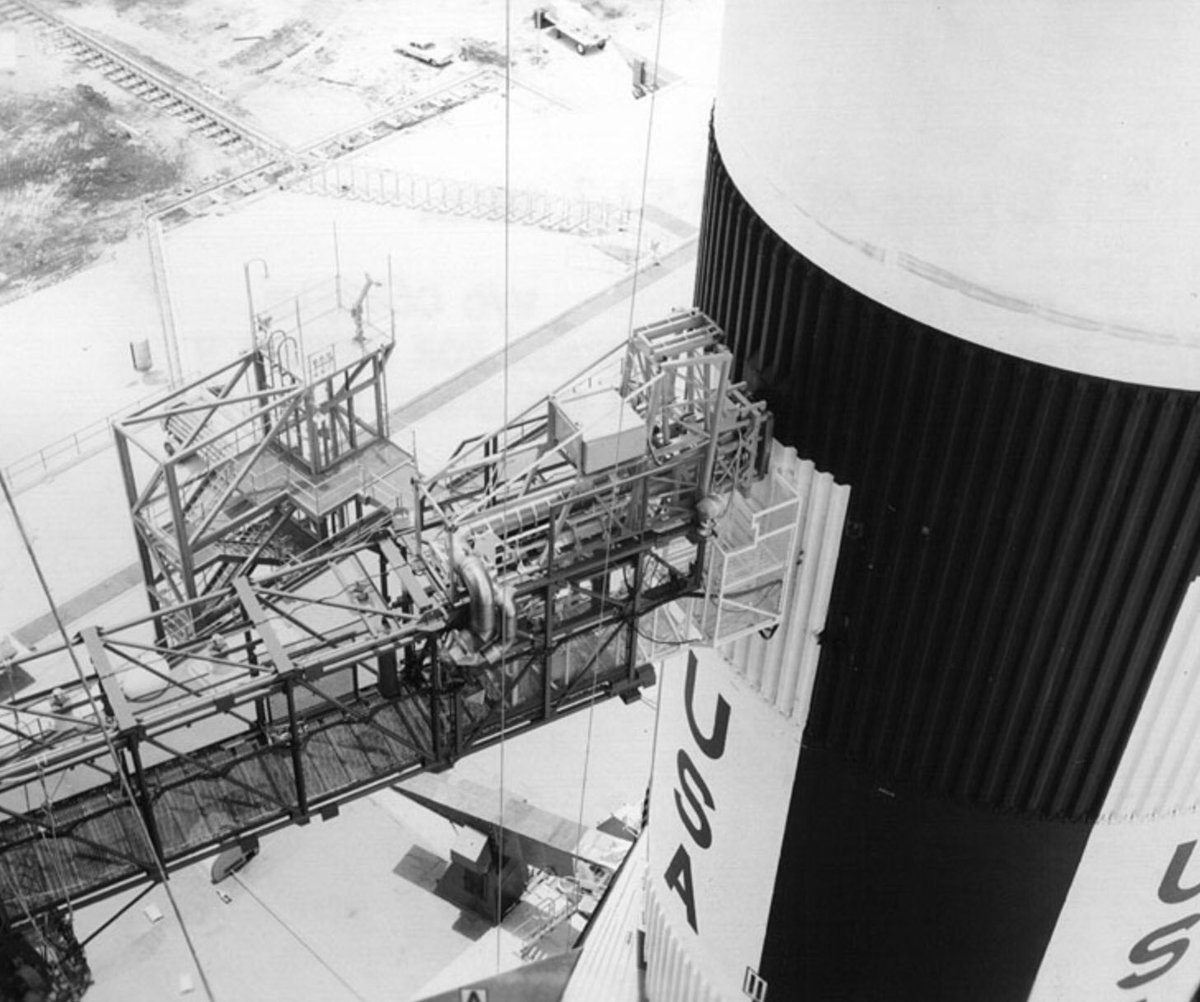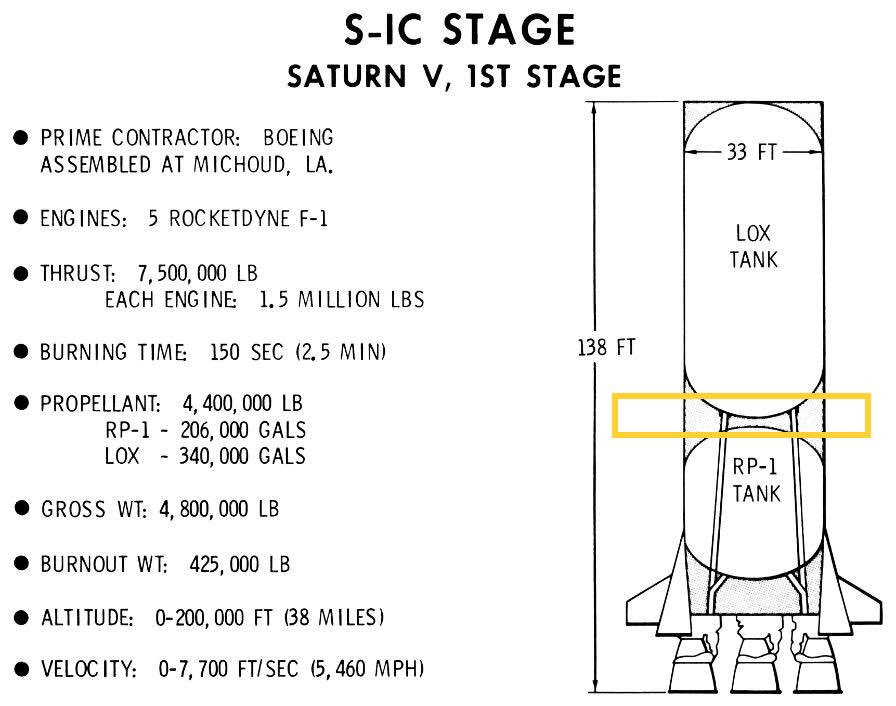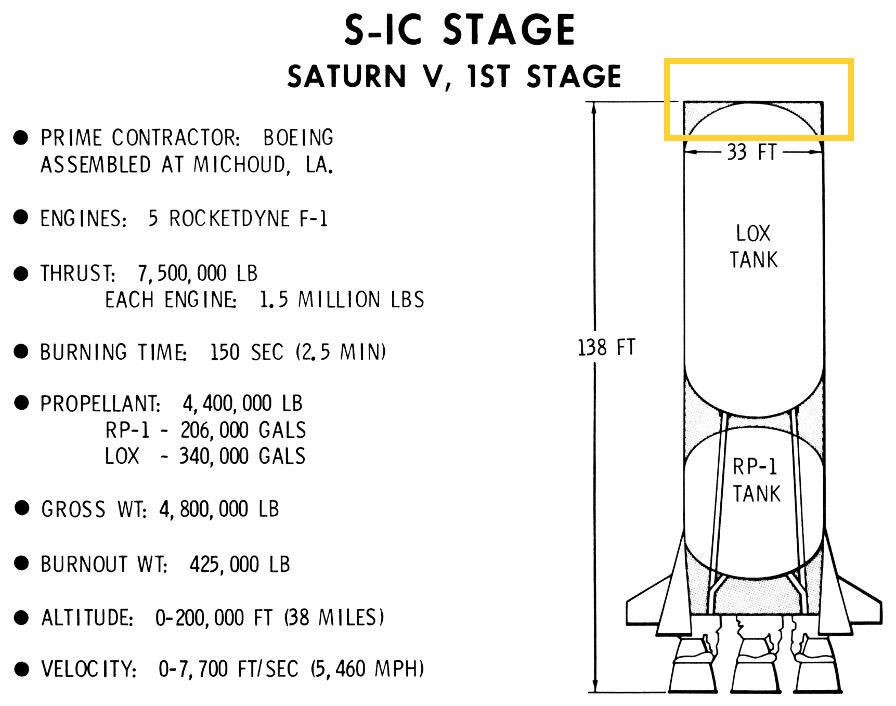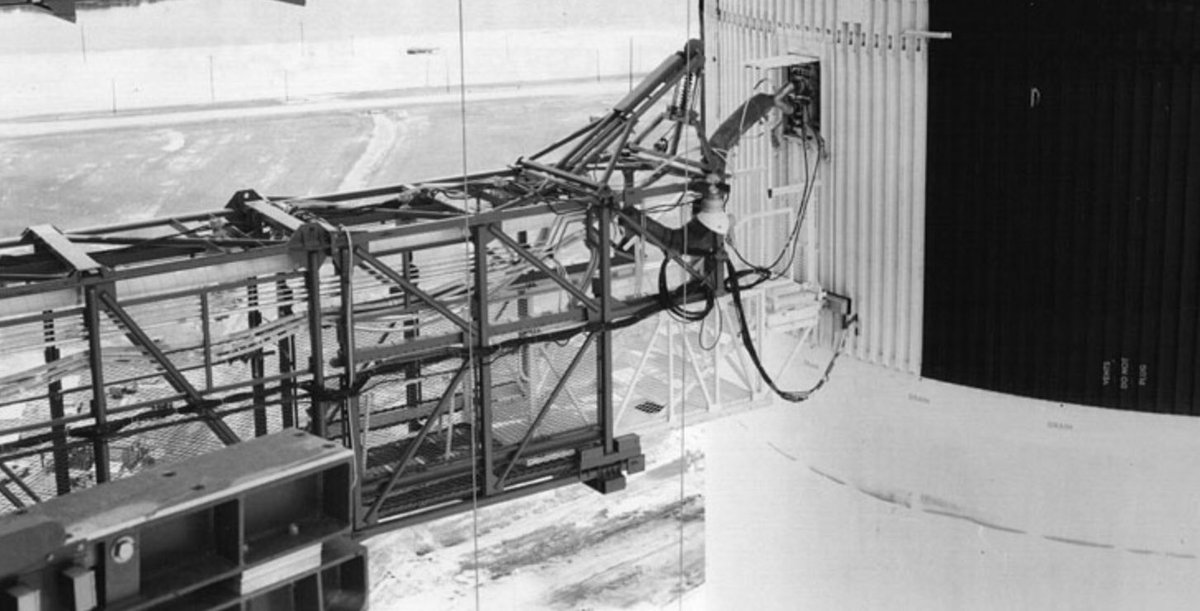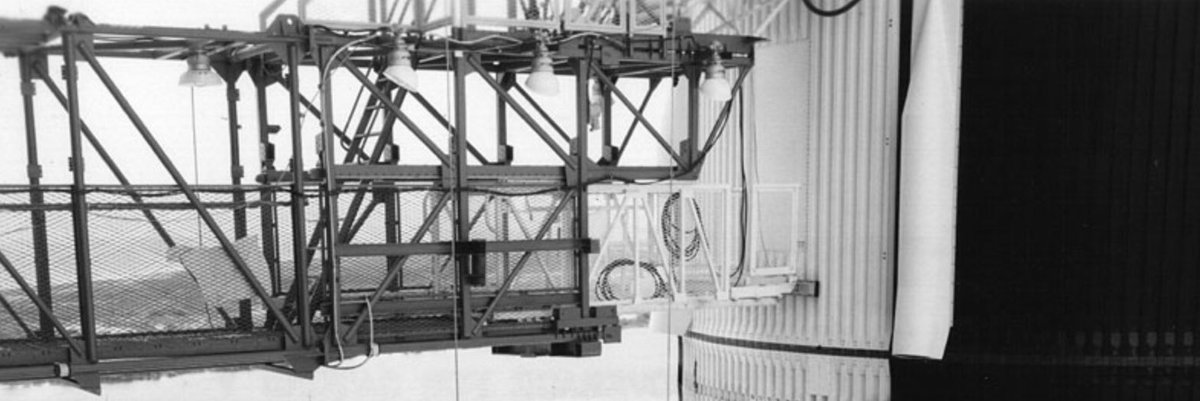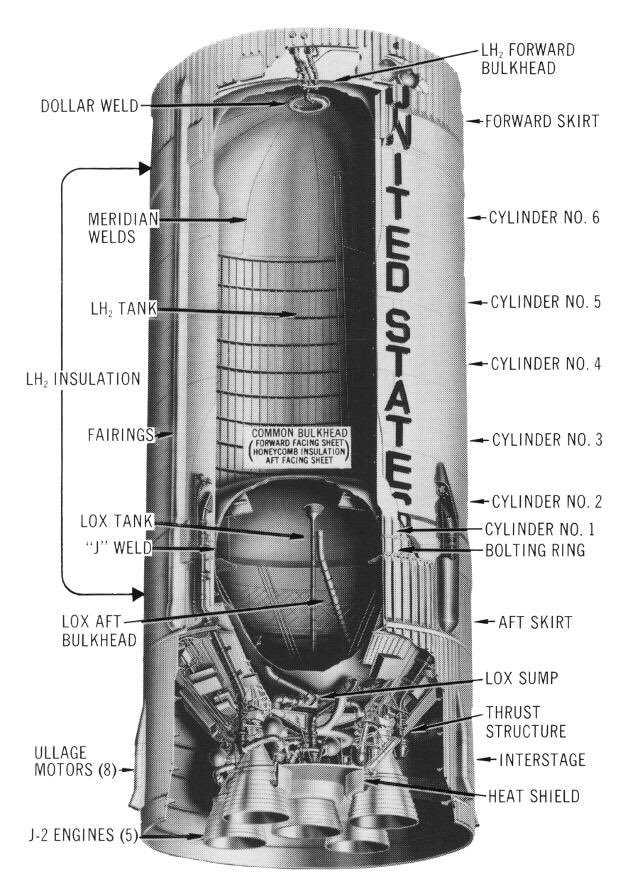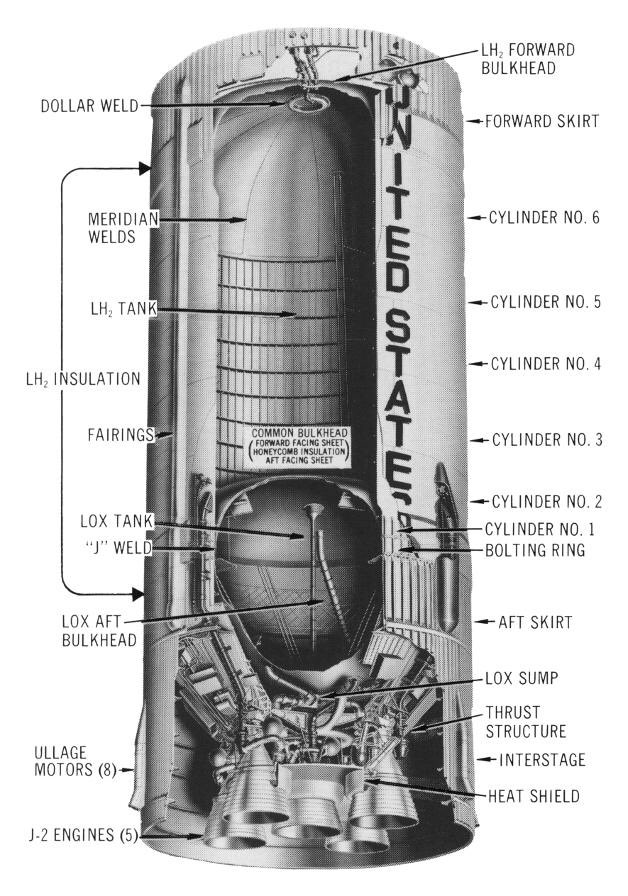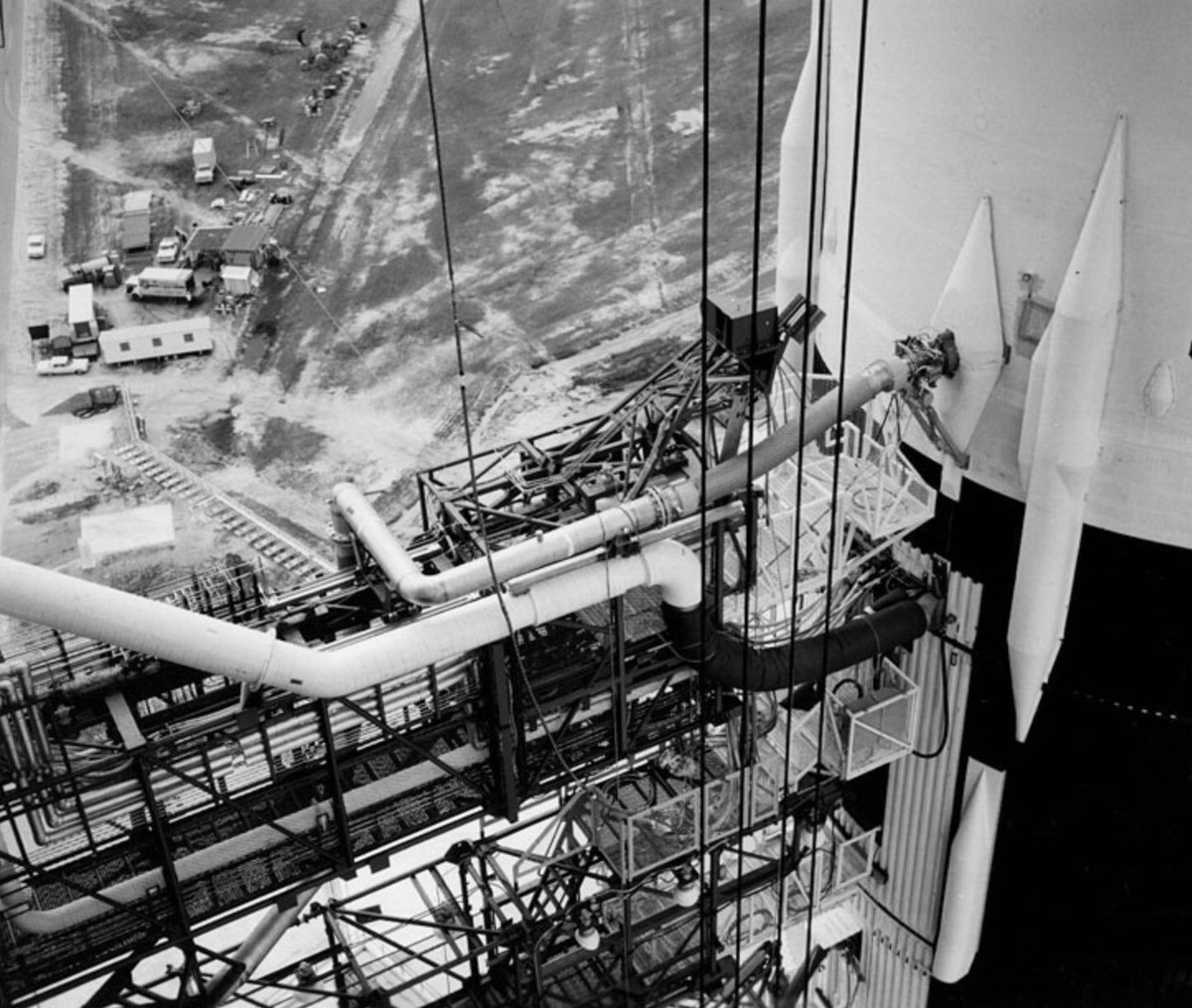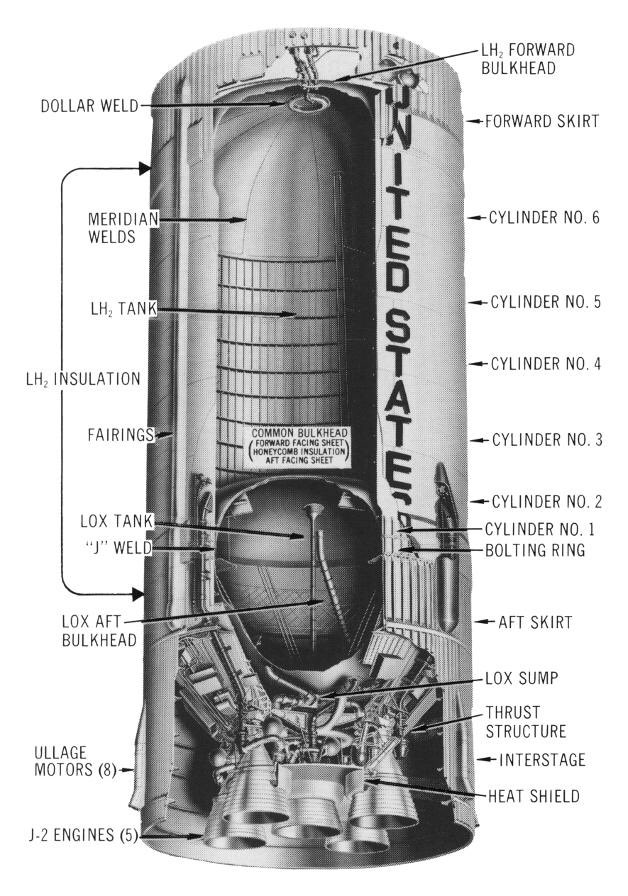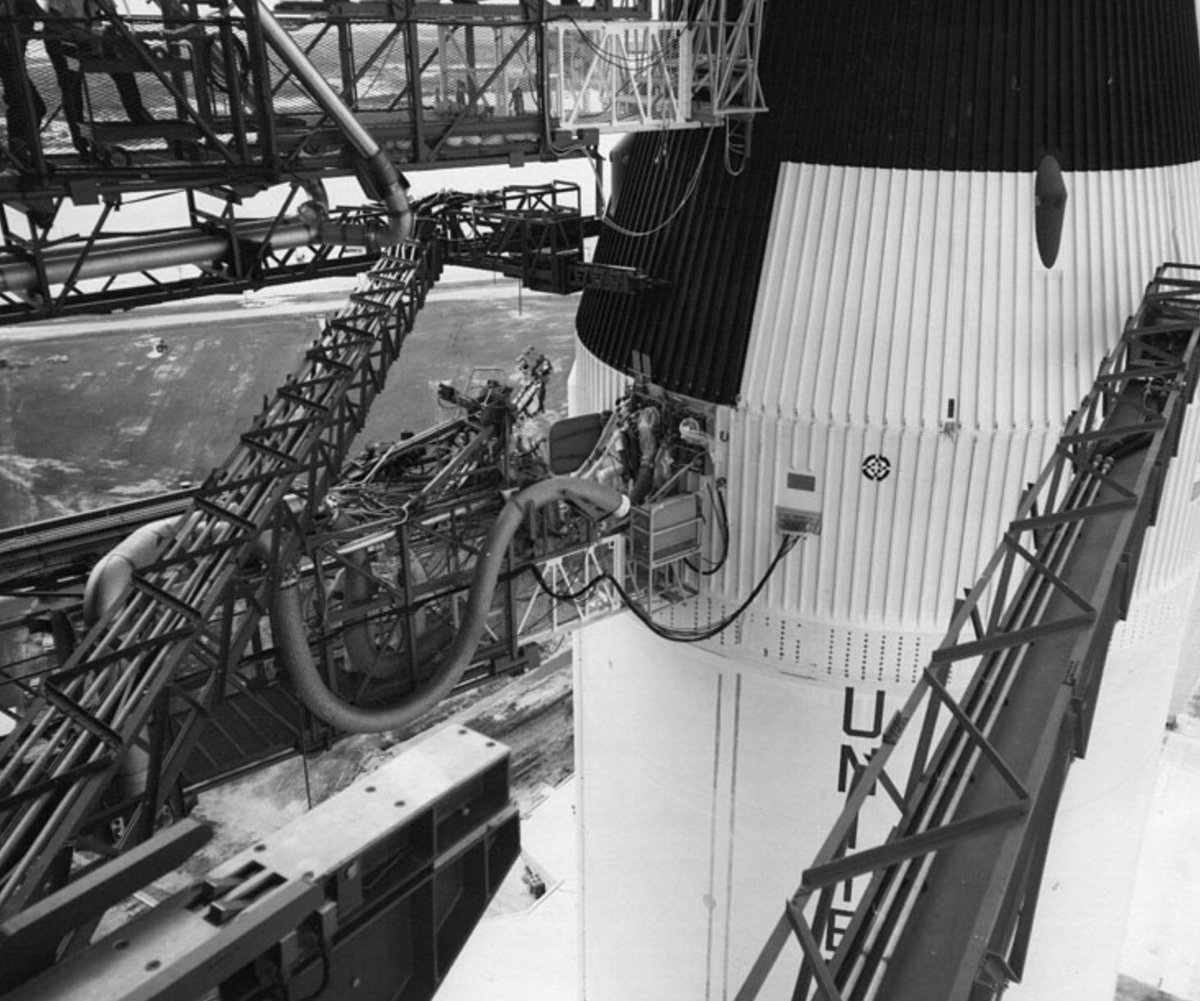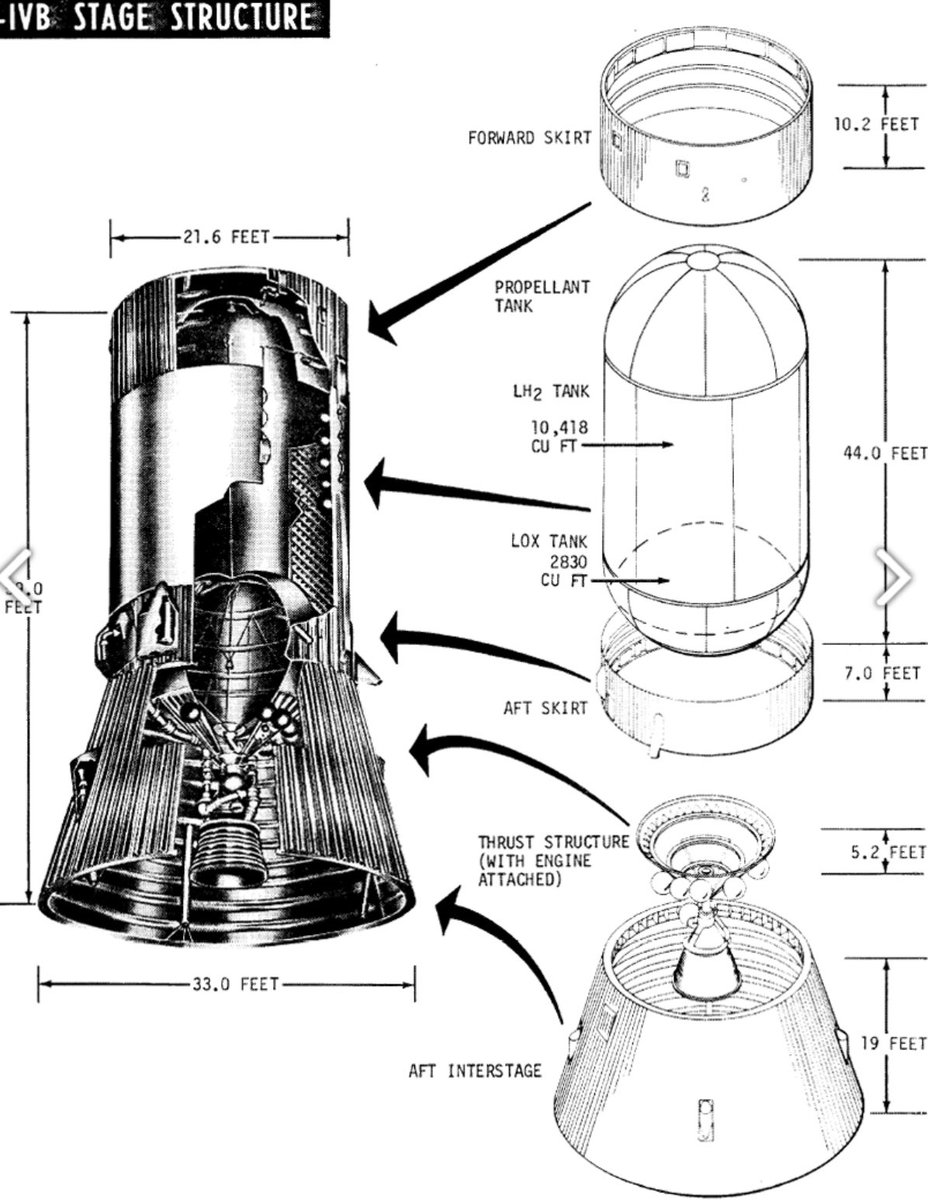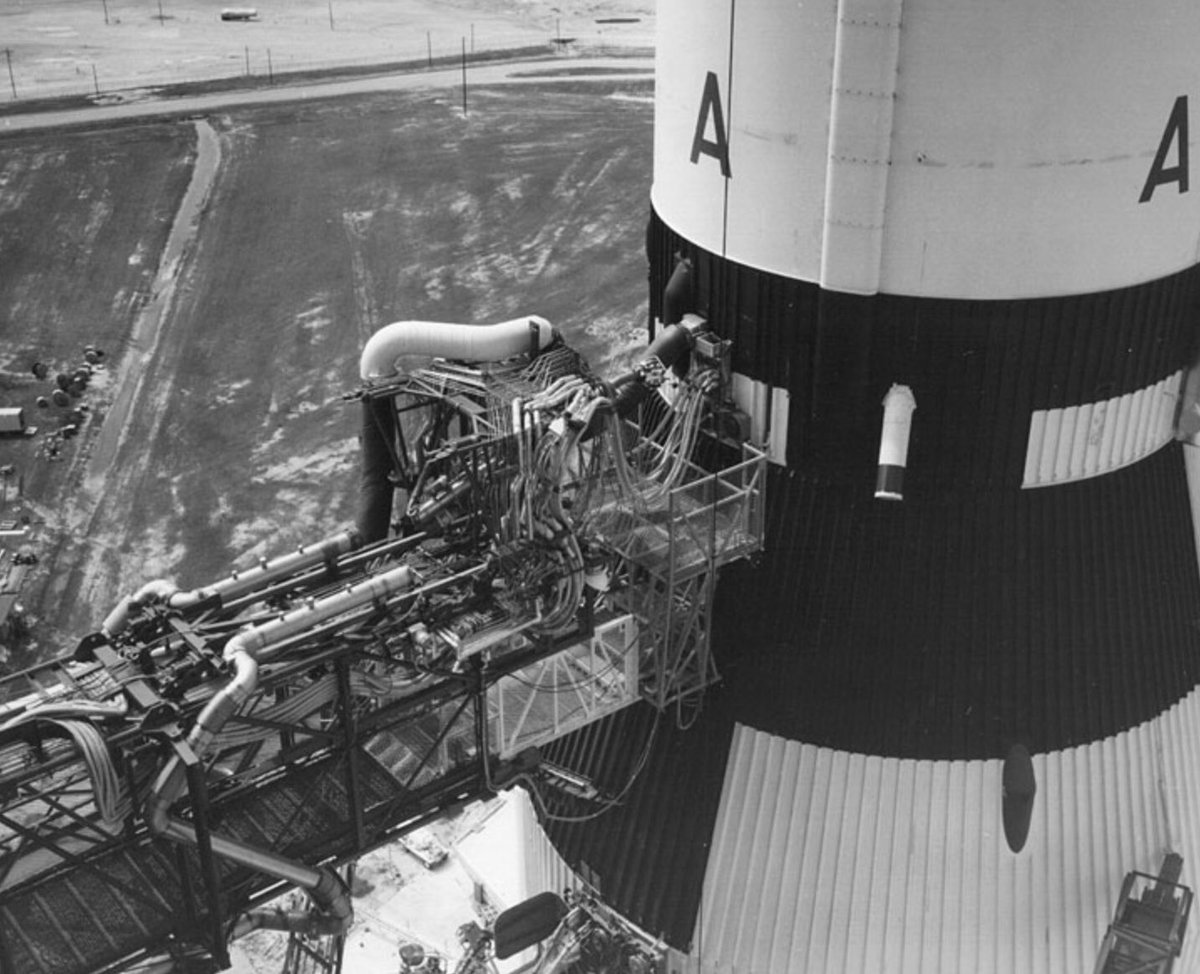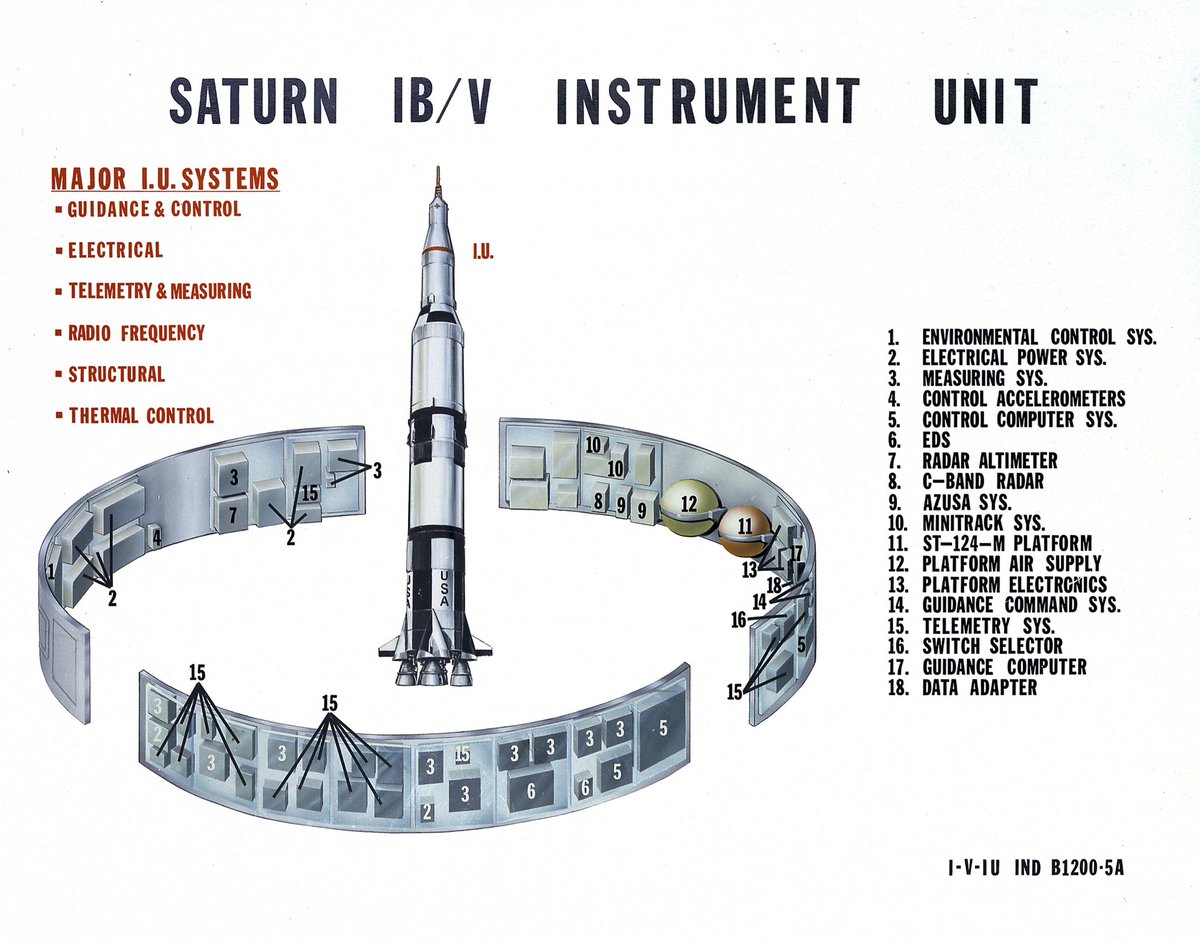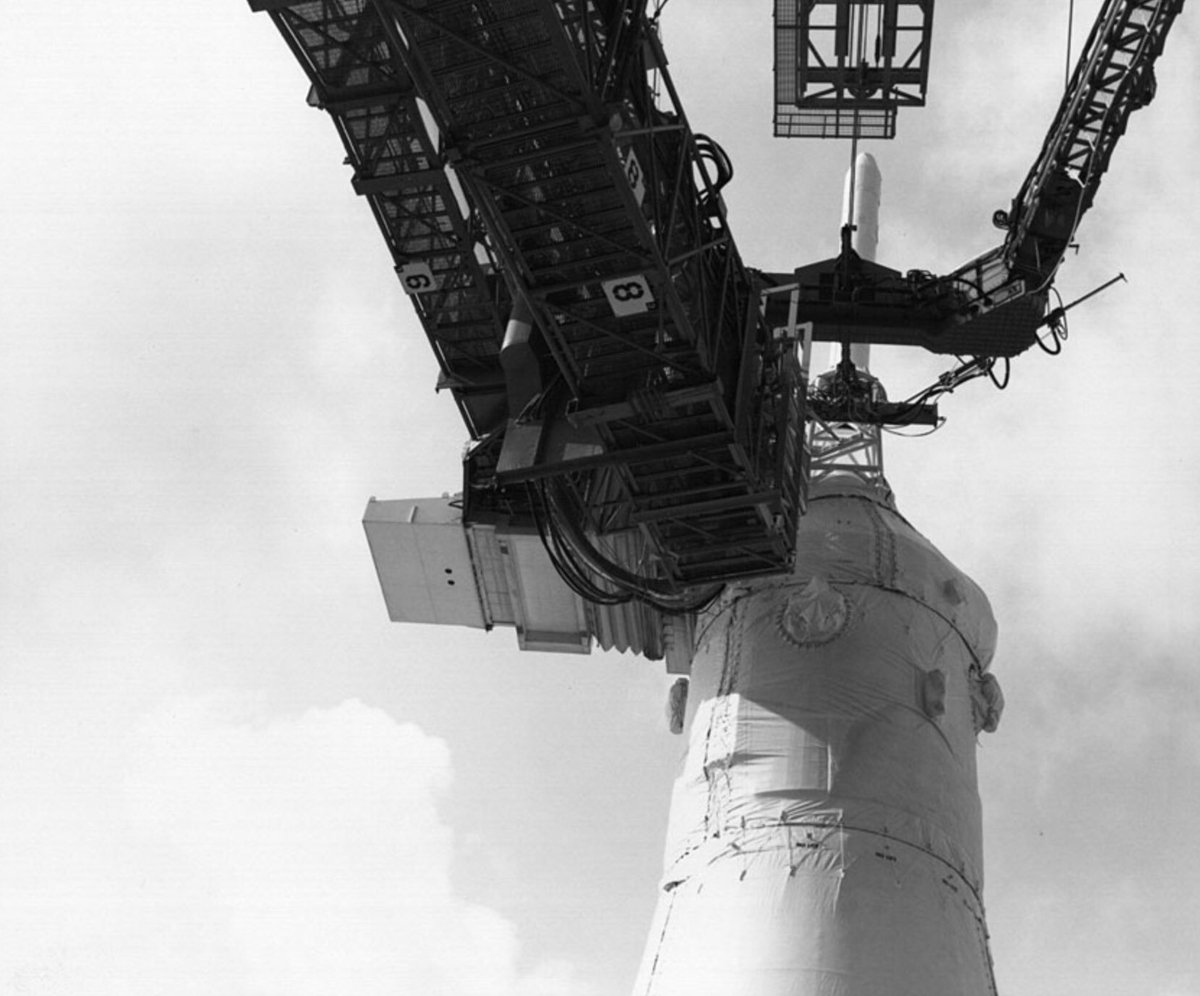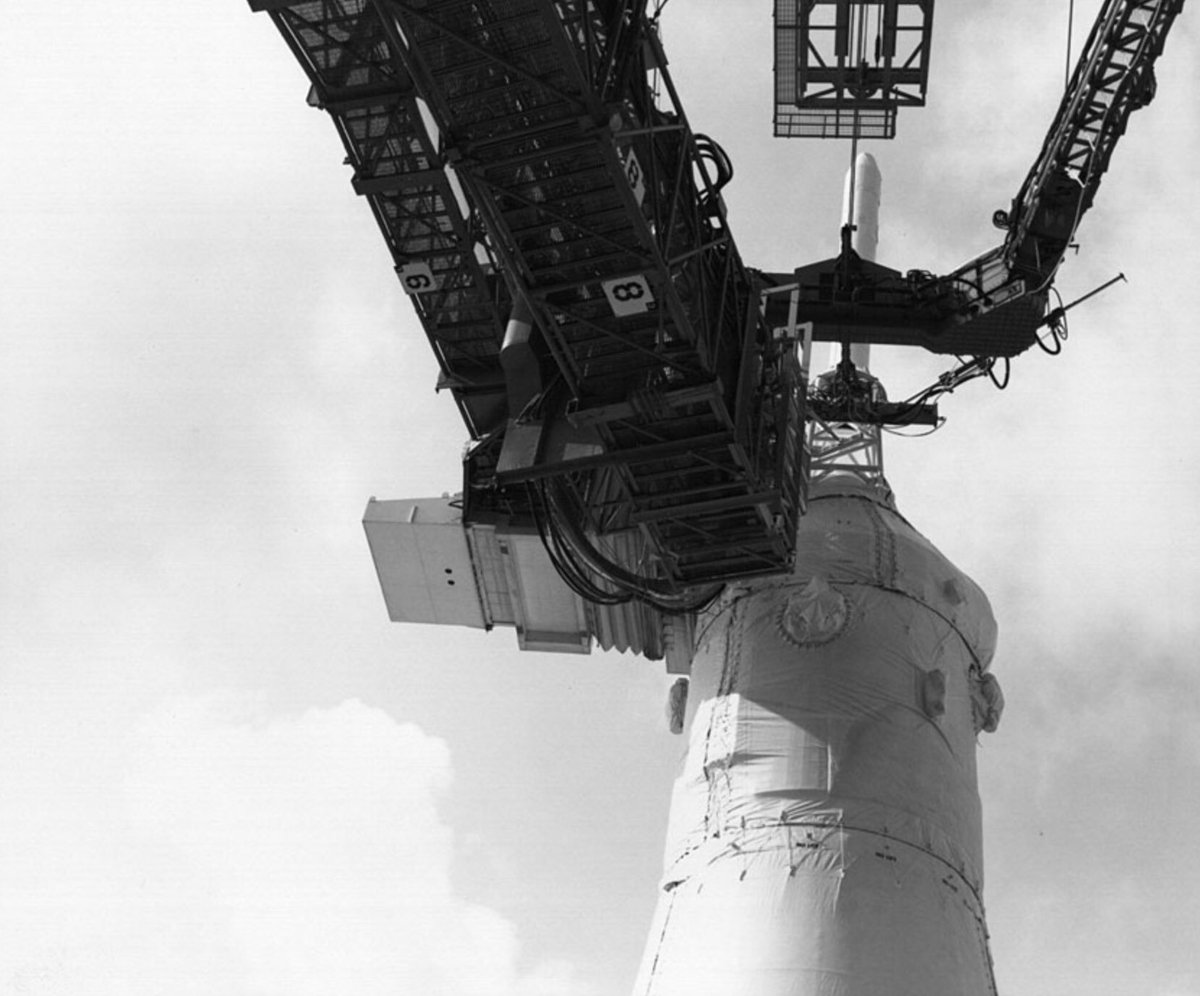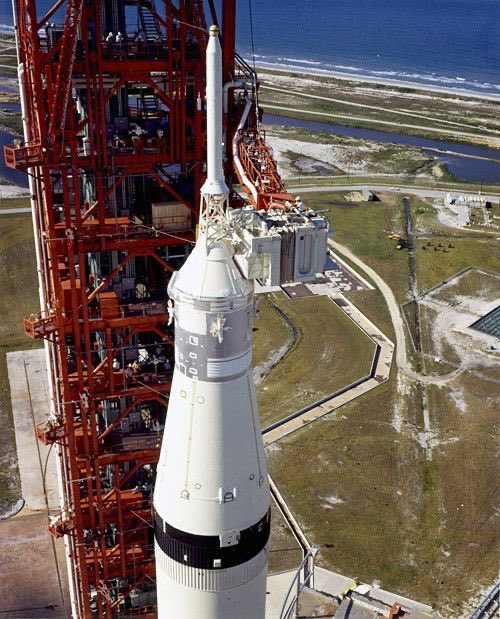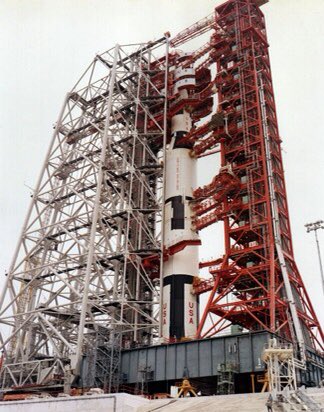Thread on the Apollo Launch Umbilical Tower (LUT) / Mobile Launch Platform (MLP) and the purpose of the swing arms that extend from the tower to the mammoth Saturn V.
Kurt Debus (Director KSC) drove the mobile launch concept when the spaceport was being designed. Mobile launch meant that NASA could prepare a number of birds, at the same time, even if a rocket was sat on the pad.
NASA contracted Reynolds, Smith and Hills (Jacksonville) to design and construct 3 launchers. Construction started in July 63 and was essentially finished just 3 years later, at a cost of 34 million dollars (approx. 330 today).
Despite looking like they might support the Saturn V they served a different function entirely.
4 hold down arms (pic 1 & 2) supported the entire weight of the booster and kept it steady.
The viscous damping system also connected to the base of the escape tower (3) for stability.
4 hold down arms (pic 1 & 2) supported the entire weight of the booster and kept it steady.
The viscous damping system also connected to the base of the escape tower (3) for stability.
The Saturn V rolled to the pad dry, fueling would start one month prior to launch. To understand what function the swing arms served it’s easier to split the Saturn into its stages....
The first stage basically comprised of an oxygen tank on top of a fuel tank.
As the fuel tank was closet to the ground it didn’t a swing arm to service it. The tail service masts provided RP-1 (fill and drain), gaseous nitrogen and helium.
As the fuel tank was closet to the ground it didn’t a swing arm to service it. The tail service masts provided RP-1 (fill and drain), gaseous nitrogen and helium.
Working from the base up.
Arm 1 serviced and gave access to the interstage between the tanks. The arm supplied liquid oxygen (fill and drain) to the oxidizer tank.
Arm 1 serviced and gave access to the interstage between the tanks. The arm supplied liquid oxygen (fill and drain) to the oxidizer tank.
Arm 4.
This serviced both liquid oxygen and hydrogen tanks as the tanks were only separated by a bulkhead.
This serviced both liquid oxygen and hydrogen tanks as the tanks were only separated by a bulkhead.
Arm 6.
Gives access to the single J-2 engine on the third stage. As well as supplying oxygen and hydrogen to the tanks.
Gives access to the single J-2 engine on the third stage. As well as supplying oxygen and hydrogen to the tanks.
Arm 9.
The crew access arm / white room.
Gave pad crews and astronauts direct access to the command module.
The crew access arm / white room.
Gave pad crews and astronauts direct access to the command module.
Arms were classed as “pre-flight” or “in-flight”.
Many arms stayed connected to the vehicle so they could service it right up until launch.
Many arms stayed connected to the vehicle so they could service it right up until launch.
You might have noticed that none of the arms fueled the spacecrafts. This was done via the Mobile Service Structure was enveloped both the LM and CSM.
Sources: J Ward, A Contessa, J Pickering, Apollo Maniacs.

 Read on Twitter
Read on Twitter